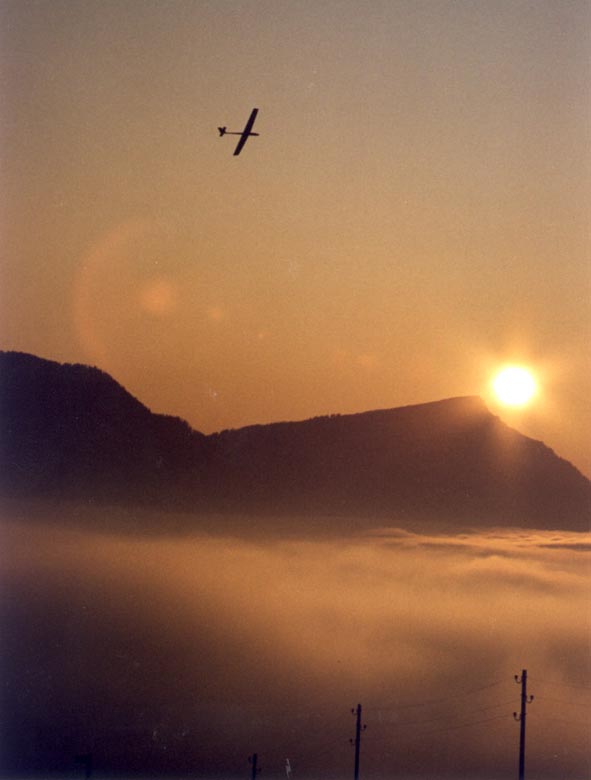F3 Soaring
This commission is in charge of the following FAI competition categories:
F3B - Multi-Task Gliders.
Opposing requirements are placed on an F3B model: optimal winch launch, lowest sink rate in time flight, best glide in distance flight and lowest drag in speed flight. The wingspans have settled at 2.9 - 3.1m. The empty weight is 2 - 2.2 kg, but can be increased to 3.6 - 4 kg with the addition of ballast.
In order to be able to perform the flight tasks with the greatest possible efficiency, all parts are now manufactured exclusively in carbon fiber construction in negative molds, with the wing spar usually laminated from UHM (ultra high modulus) fibers.
However, the design and manufacture is so demanding that only a few pilots still build the models themselves.
However, there are various manufacturers, especially in the Czech Republic and Slovakia, but also in Germany, where the delivery times for the popular winning models can be up to 1 year..

F3F - Slope Soaring Gliders.
The models are almost identical to the F3B models, but mostly with a smaller wingspan around 2.7 - 2.9 m, since with a course length of only 100m, turns must be made very frequently (9x per race).
The wind should blow against the slope with min. 3m/s, otherwise there is no strong enough upwind to conduct a fair race.
Since especially the wind in the Swiss mountains rarely blows constantly and predictably, this category has not been flown in Switzerland until now. We have several substitute regulations for slope competitions, most of which provide for an elevated model release site. Depending on the slope, the flight task may consist only of a timed flight with a target landing, or it may be extended by a triangular course that must be flown around as often as possible. In the latter task, a group-based scoring helps to compensate for weather fluctuations.
Slope competitions, especially in the regions, are very well suited as an introduction or for model pilots who shy away from the material expenditure of the other categories, as one can also win here with simpler models.
F3J - Thermal Duration Gliders.
These models are mainly optimized for a low sink rate. However, because of the extremely rapid run-up launches with 2 people as tugs, the model must also be designed very robust and stiff, so the construction is similar to the F3B models. Meanwhile thinner airfoils are used to improve the cross country performance of the models. With such models, upwind fields far away can be reached and the model can still return to the landing site even against strong winds.
The wingspans are between 3.2 and 3.7 m, but the models still only weigh around 2 kg. In windy conditions, some ballasting is also used; usually less than 0.5 kg.
Since the landing should be as precise as possible, the models often have, in addition to effective airbrakes, downward curved fuselage noses that bore into the ground without much braking distance.
Here, too, the models are mostly manufactured in the Czech Republic and Slovakia.
F3K - Hand Launch Gliders.
The ejection glider category has undergone an enormous development push in recent years and is very popular, especially abroad.
The aim is to launch a model with a maximum wingspan of 1.52 m and an empty weight of only 210 - 350 g as high as possible in order to land it again on a precise time target.
In the beginning, the models were launched into the air using the javelin throwing technique. However, a new throwing technique, similar to the discus throw in athletics, revolutionized F3K flying. With the new technique, massively better heights are achieved (up to 70m). Here the model is held with two fingers on a carbon pin, which is resinated at the edge bow, and accelerated with a body rotation.
Here, too, the models are made in negative molds mostly in carbon and have been greatly developed in recent years.
|